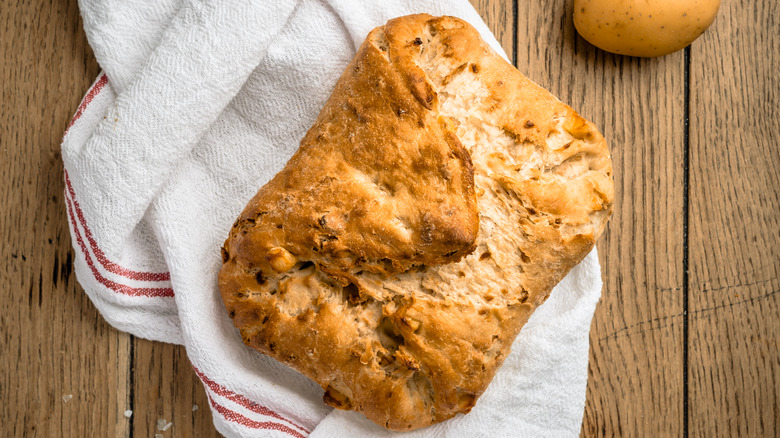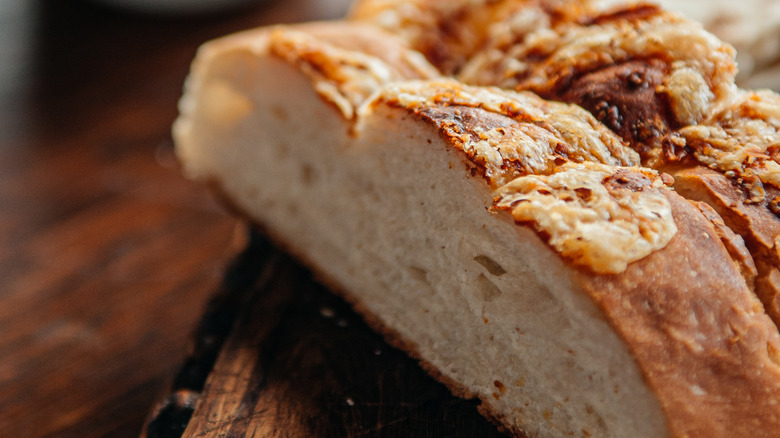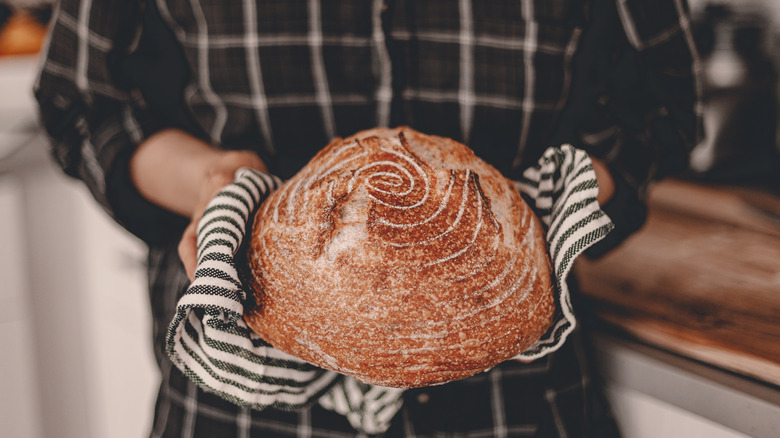What Makes German Potato Bread Unique?
Wondering what to do with leftover mashed potatoes? One option is to mix them with rye or spelt flour and other basic ingredients to make German potato bread, or Kartoffelbrot. With its crispy crust and chewy interior, this delicious bread can be a perfect addition to soups, stews, sandwiches, and other everyday meals. What sets it apart is its unique flavor and dense consistency.
In the U.S., potato bread is made with all-purpose flour, potato flakes or mashed potatoes, instant yeast, salt, sugar, and other pantry staples. Germans, on the other hand, often use a mix of white and whole-wheat flour, but some recipes may call for spelt or rye flour. On top of that, Kartoffelbrot contains little or no sugar and less flour than its American counterpart. As a result, it's soft yet denser and more flavorful, with a nutty aroma from the rye flour. These characteristics make it an excellent accompaniment to cold cuts, German sausages, cheese, or hearty spreads.
What is German potato bread?
Kartoffelbrot is a German bread developed by Antoine Augustin Parmentier, a pharmacist who believed potatoes could end hunger. In 1778, he published a recipe book on how to make flourless bread from this starch. Potato bread continued to gain popularity over the centuries, especially during the World Wars when flour was scarce.
Traditionally, this food product is made with whole wheat flour, potatoes, yeast, salt, and water but may also contain spices, eggs, olive oil, and other ingredients. The bread is usually served with savory or sweet toppings and has a hard crust around its moist interior. Enjoy it as a side for German potato and chervil soup, ham, salami, roast beef, smoked fish, or leberwurst to amp up its flavor. If you have a sweet tooth, grab a slice of bread and top it with butter and your favorite fruit jam.
Kartoffelbrot also goes well with scrambled, fried, or poached eggs, herring salad, quark, cream cheese, or bratwursts. For example, you can fry it in butter and top it with ham and sunny-side-up eggs to make a traditional German open-faced sandwich called Strammer Max. Or you can simply dip it into beef stews, cream soups, or tzatziki for a satisfying meal or snack.
Kartoffelbrot has a unique flavor profile
What makes German potato bread so popular is its distinctly robust flavor and heartiness. These characteristics are due to the combination of rye and wheat flour. For example, rye flour imparts a nutty and earthy flavor to the bread and gives it a chewy texture. The potatoes add moisture and a mild sweetness, enhancing its appeal.
By comparison, regular potato bread is softer and fluffier, with a tender crust. It also has a less pronounced flavor than Kartoffelbrot, and its consistency is somewhat similar to traditional white bread. However, both types of bread will vary in taste and texture, depending on the ingredients used.
For instance, many Germans use wheat flour type 500+, which is pretty much the same as all-purpose flour. Therefore, their potato bread will taste closer to the American version. Others add milk, yogurt, poppy seeds, dried herbs, and spices like turmeric, nutmeg, or garlic, which can completely change its flavor. You can tweak your recipe to suit your needs based on how you'll be using it. Making sandwiches? Go for a sturdier loaf. Want some slices for mopping up a delicious sauce? Softer may be the way to go. Whichever your preference, kartoffelbrot is uniquely adaptable.


